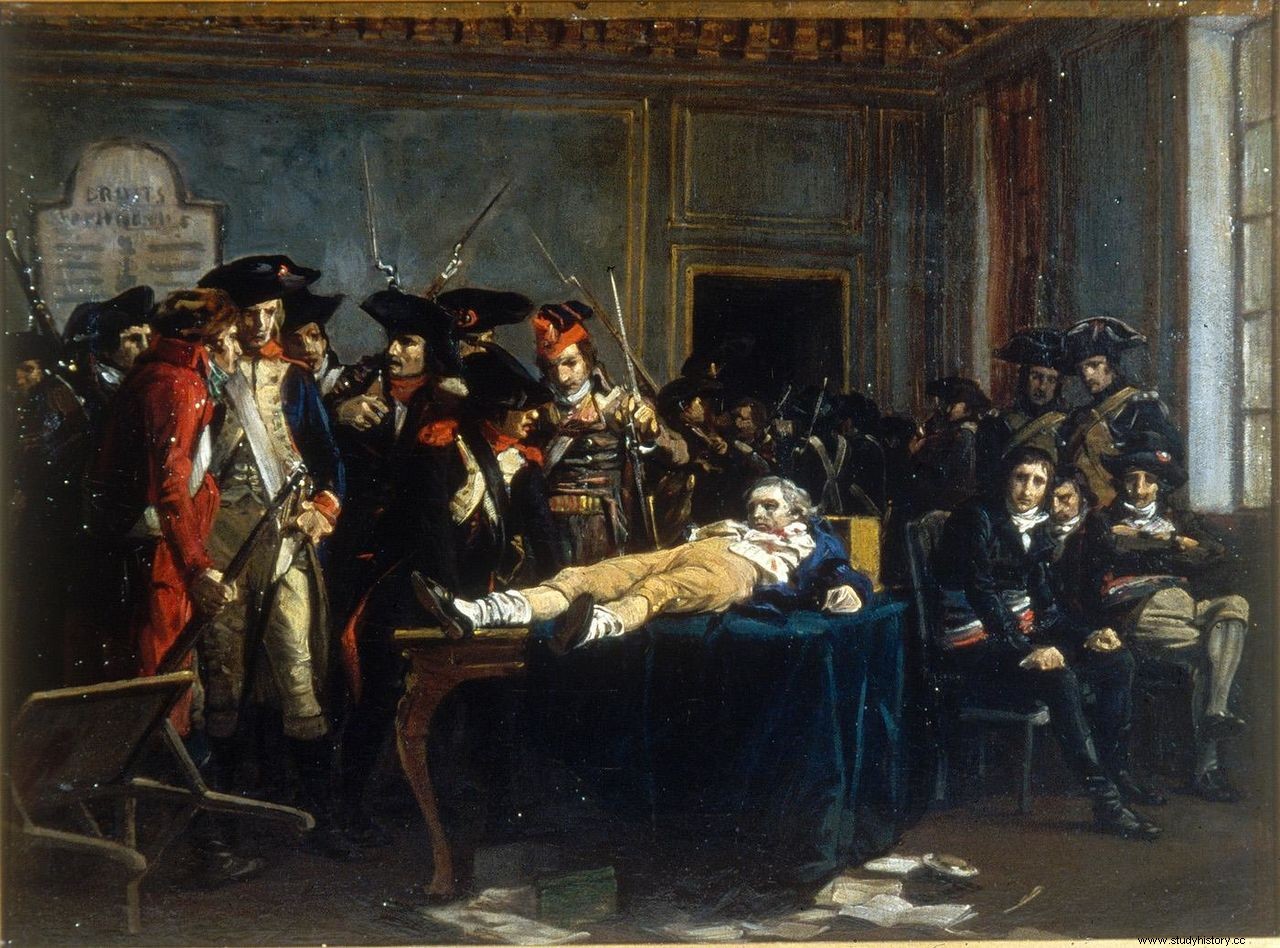The Revolution, by sweeping away the Old Regime, generated a veritable witch hunt against the royalists; on January 21, 1793, the Montagnards lead Louis XVI to the scaffold. Two months later, an extraordinary criminal court, called revolutionary, was created. On March 21, the Terror establishes the surveillance committees, dependent on the Committee of General Security.
It was against a background of economic, social and political instability that the Terror was officially proclaimed on September 5. The Committee of Public Safety, led in particular by the politicians Couthon, Saint-Just and Robespierre, drafted the law on suspects (September 17, 1793), advocating the condemnation of "those who, having done nothing against freedom , also did nothing for her” . Their power is undivided and justice, expeditious. Executions escalate. Robespierre embodies the Terror and takes it to its climax with the decree of June 10, 1794. Indeed, any suspect can be arrested, even without reason. In addition, the defendants, deprived of defense, are dependent on the Revolutionary Court of Paris which has only two options:acquittal or death. But on 9 Thermidor of Year II, an internal war broke out between the Committee of General Security and the Committee of Public Safety, deemed too dictatorial.
July 28, 1794 (10 Thermidor Year III)

Characters
Paul Barras
Joseph Cambon
Georges Couthon
Francois Hanriot
Philippe Lebas
Louis Louchet
Maximilian of Robespierre
Auguste Bon Joseph de Robespierre known as Robespierre the Younger
Antoine Saint-Just
Procedure
While he is at the rostrum of the Assembly, on July 26, 1794, Robespierre declaims a speech against the "corruptible" (the deputies Collot d'Herbois, Billot-Varenne, Barras, Fréron in particular are worried). Also, the next day, the deputies cried "down with the tyrant" at every word of Robespierre, in order to muzzle him. From then on, the deputy Cambon, in the gallery, dared to impeach Robespierre, followed by the deputy Louchet, who proposed a decree that the deputies approved by a show of hands. Robespierre is, therefore, arrested as well as his brother, Couthon, Saint-Just, Lebas, then imprisoned. General Hanriot calls the Commune to an insurrection and tries, with several dozen soldiers, to get Robespierre and the other prisoners to escape. The confrontation takes place between the insurgents and the Convention (whose soldiers are led by the deputy Barras among others) at the Town Hall. Robespierre, in the chaos, receives, or shoots himself, a bullet in the jaw. The next day, July 28, 1794, or 10 Thermidor, he was in turn dragged to the scaffold, taking with him the end of the Terror. Joy explodes in the streets, all freedoms and extravagances are allowed.
Consequences
Forgetting the ideals of the Revolution, and the freedom it once carried as a banner, the Terror was a real dictatorship. The death of Robespierre marks the end of this dark period. The Convention then drafted the Constitution of Year III. Universal male suffrage is abolished, the censitaire is restored. Two assemblies are created for the legislative power and neither has ascendancy over the other. In addition, five Directors, proposed by the Five Hundred and elected by the Council of Elders (the two Councils form the legislative assembly), direct the executive, a collegial government is born:the Directory.
